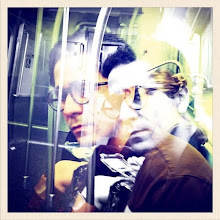The ontological implications of aesthetic comport for Barry Lyndon transcend mere usage as model for character development. In confluence with the flattened portraiture of the film and a narrative tendency to flatten time as it is exhibited in the film, Barry Lyndon abides in a larger argument of synchronicity, or resonance, of existence.
Bazin:
If there are, still, tensions and climaxes in [certain films] which leave nothing to be desired as regards drama or tragedy, it is because, in the absence of traditional dramatic causality, the incidents in [these] films develop effects of analogy and echo. [A certain hero] never reaches the final crisis (which destroys him and saves him) by progressive dramatic linking but because the circumstances somehow or other affect him, build up inside him like the vibrant energy in a resonating body. He does not develop; he is transformed; overturning finally like an iceberg whose center of buoyancy has shifted unseen.
The duels, as I have described, echo each other and fold the film into a momentous singularity. The framing of narrative action around the imminence of events further flattens out the way we experience the film. It progresses but, as it seems to do so in a more vertical mode, it also holds still. From this peculiar axis, action happens, has happened and is about to happen at once. And rather than focus on the flux between past, present and forthcoming, the film focuses on synchronic fluxions and the flat presence of their occurrence. The epilogue reads:
IT WAS IN THE REIGN OF GEORGE III THAT THE AFORESAID PERSONAGES LIVED AND QUARRELLED; GOOD OR BAD, HANDSOME OR UGLY, RICH OR POOR THEY ARE ALL EQUAL NOW
All fluxions are compressed to one. With the same ideational totality by which the narrator is ubiquitous across time, the persons narrated in the story are equal upon the final account of the film. They are flattened in the hands of history. Like the 18c paintings that are the film’s aesthetic reference point, the film’s sense of history is of totality upon a canvas. All players are together and, taking account of the film’s narrative frame as premise for understanding history on a vertical axis of ubiquity, all players are carrying out their actions in perpetuity.
Barry Lyndon forces its viewer to experience film as painting: cinematographeum, ut pictora. But, beyond its handle on historical representation, the film’s sense of time suggests that history, as we experience it, is totalizing. By extension, we too become flattened in the hands of time, if we follow the argument of this film. Barry’s poetry, his aesthetic comport, becomes pictorial. And portraiture, by its subsuming presence in the lives of the film’s personages, seeps into the poetry of these people.
I will finish my account of the film with the same integrity to ambiguity, which characterizes Bazin’s more compelling writings. The film seems to be an effort to mediate an interface between time and aesthetic. Its aesthetic, its poetry, becomes contra-chronological. It is a poetry that, by its peculiar alignment with portraiture, becomes contra-poetic. And its portraiture becomes, by the sheer diachronic nature of film, spread into time like measured, poetic verse. Whether or not Barry Lyndon indeed resolves the epistemic rift between painting and poetry—-whether or not film could serve in the capacity of an aesthetic meeting point between these two, ancient rivals—-is a crucial question which I note without resolving.
Monday, December 15, 2008
Subscribe to:
Post Comments (Atom)




No comments:
Post a Comment